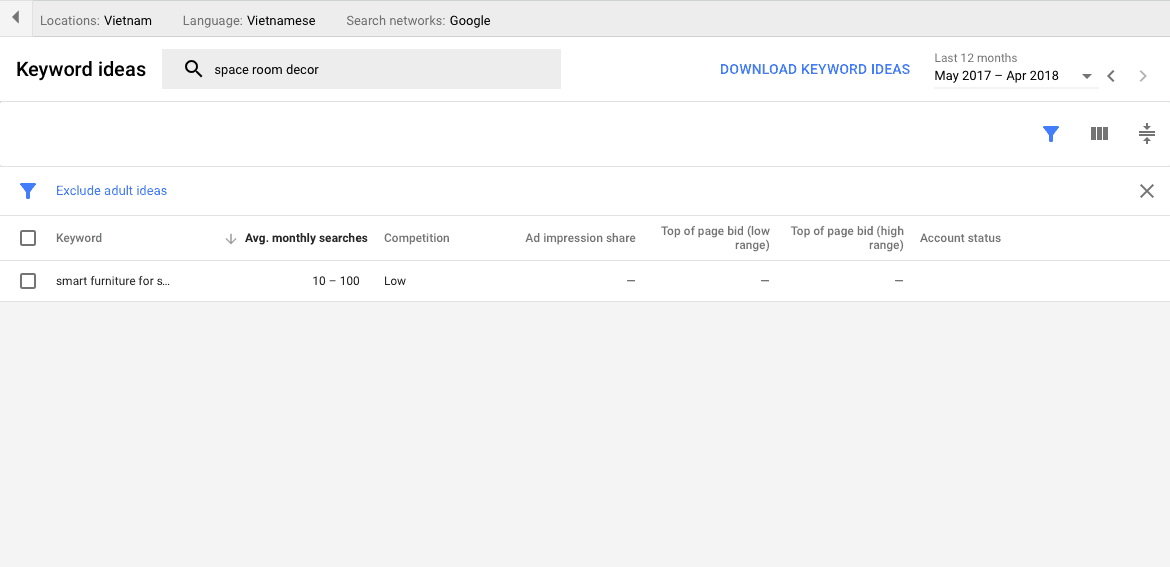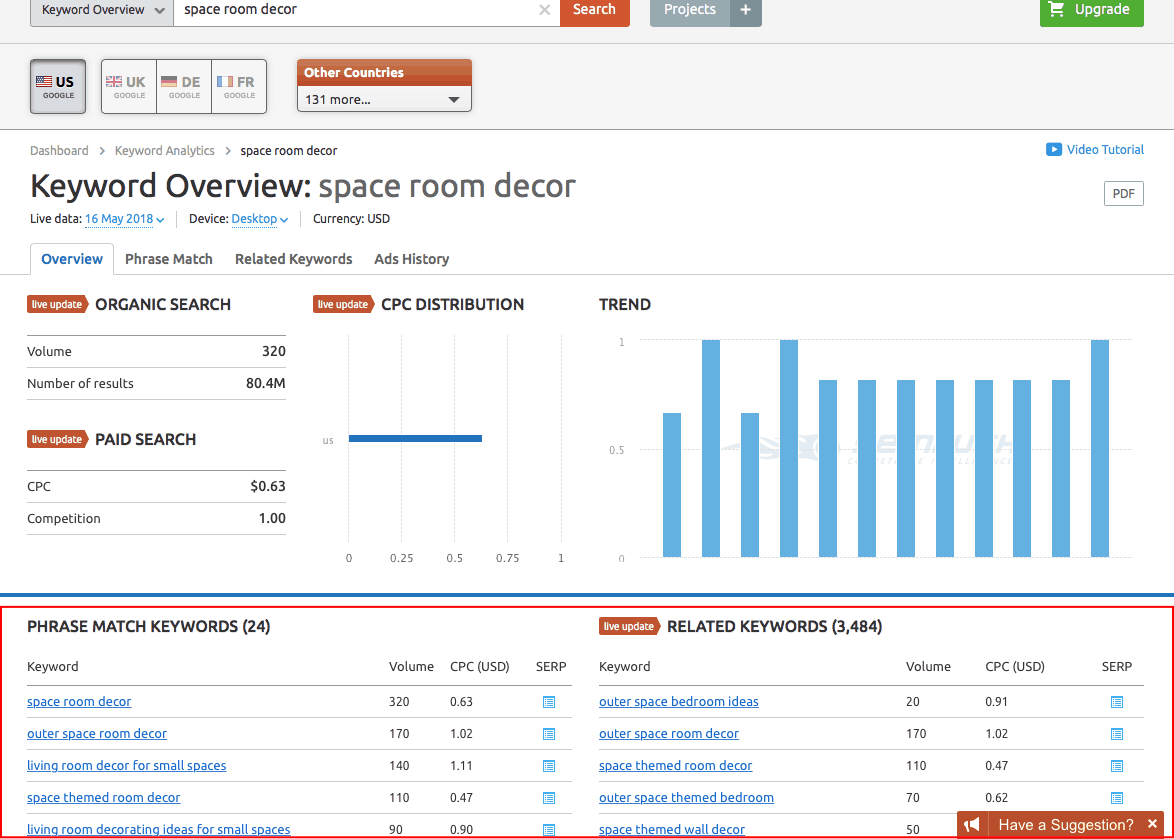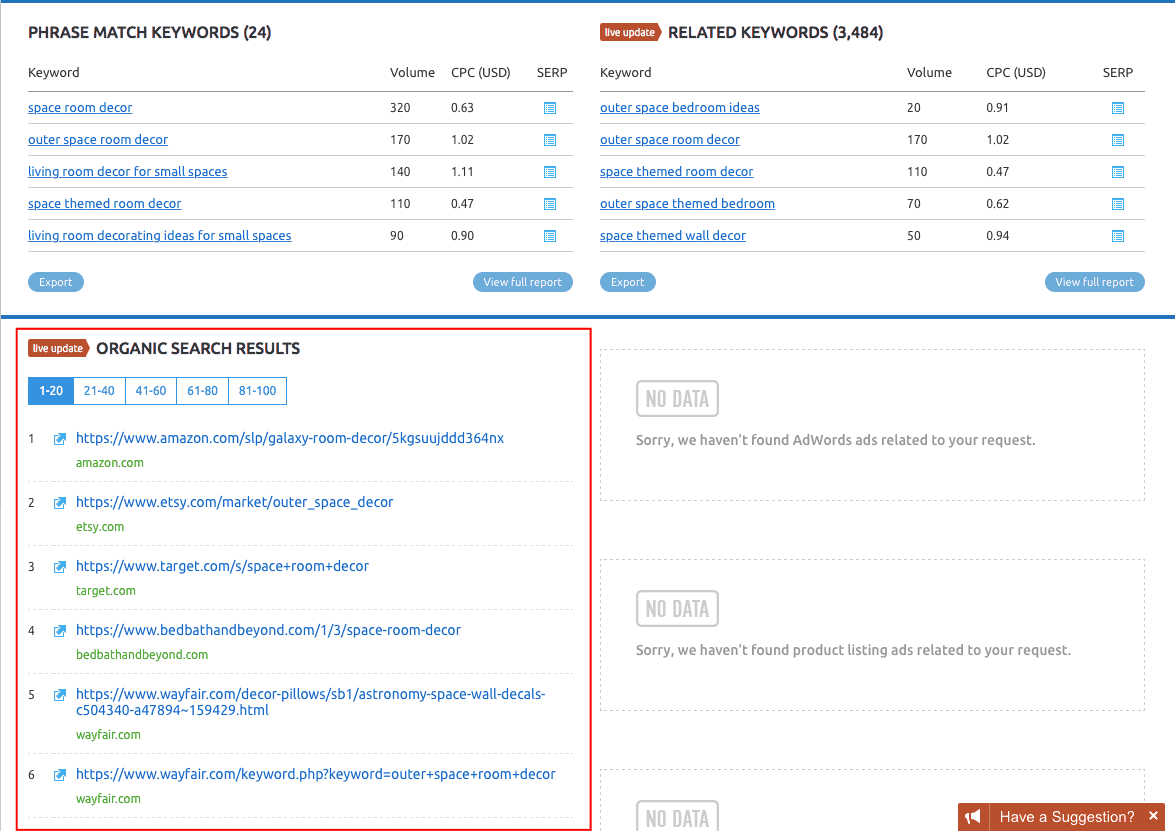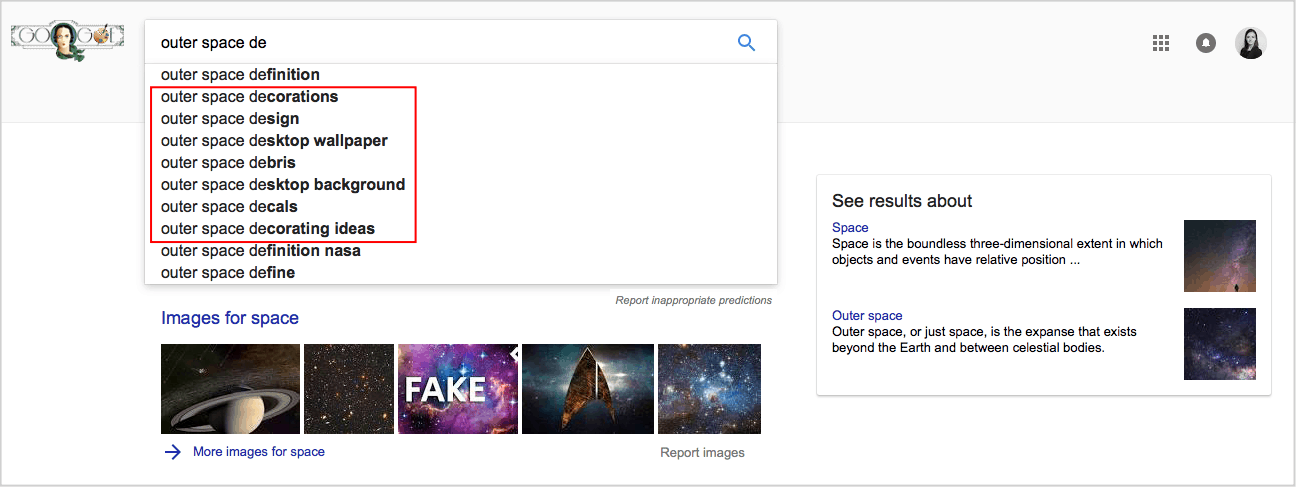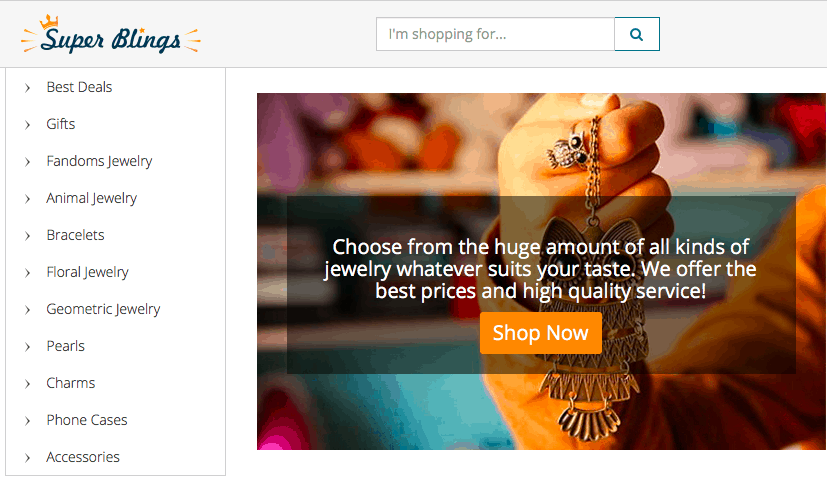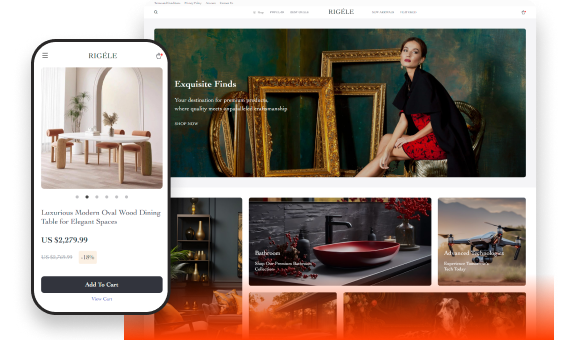Ecommerce SEO Checklist: Is Your Dropshipping Store Perfectly Optimized?
Use our ecommerce SEO checklist to scan your store, to find out the ways for its improvement, and to boost the webstore traffic!
If you want thousands of people to find your dropshipping store and to place their orders, then, you need to make it easy for search engines to locate this site and show it to the Internet users who are looking for something similar.
The higher your webstore positions are, the sooner the users will see your webstore on the search engine results page – and who, indeed, would click on the 7th or 9th Google page while looking for something? (Only a student writing a thesis, perhaps, but that’s a whole different story).
So, as a dropshipping store owner, you have a very clear goal: to achieve the best possible result for your main store keyword. Let’s see if you have already taken all the necessary steps – our ecommerce SEO checklist will help you out with this.
Ecommerce SEO Checklist: are my keywords figured out?
Keywords are the basis, the foundation, the most crucial part of your search engine optimization strategy.
If your keywords are chosen correctly, you won’t have troubles attracting the desired audience to your store. It means that the understanding of your main and related keywords is the first step towards optimizing your store for search engines.
#1 I know what’s my target keyword
The target keyword is the absolutely main keyword that will be used on every page of your store in its original or modified form. Most likely, you will further transform it and add 2-3 more words to it: this way, the target keyword will be a part of all the supportive longer keywords that are typically used for category pages and product pages.
To identify your target keyword, imagine that you need to explain your store product in 3-4 words: it will be a starting point for you.
For example, let’s suppose you’re a fan of outer space, and you decided to build your dropshipping store around this specific niche.
For a start, let’s try the following keyword: space room décor. To find out if it’s a good choice, we will use Google keyword planner.
As you can see on the screenshot above, my account isn’t active (which means it has 0 money on it and can’t yet be used to run paid ads), but anyway, it still works, and I can view the essential statistical data through it. In other words, you can simply register here as a private individual and skip all the fields that ask you to provide billing/company information. It will be enough to get access to the stats for your keywords research.
But what do we see? The planner doesn’t show any relevant keywords at all!
If you get a similarly poor result, don’t worry. Take a look at the “Location” and “Language” sections. In my example, the country is Vietnam, and the language is Vietnamese – but the language of the “space room décor” phrase is English! No wonder the system can’t detect anything suitable.
To get correct results, specify the target country and set the necessary language – surely, it should match the language of your keyword.
This time, I’ve tried the United States and the English language: as you can see on the screenshot below, the range of results immediately got much wider.
But, the results table still isn’t perfect. By default, the system shows the keywords by relevance, but it’s much more convenient to sort them by average monthly searches.
This way, you will easily pick the keywords with the most favorable number of searches: if you want to succeed and be competitive, it’s better to concentrate on the keywords with 1K-10K monthly searches.
Let’s pick the “space room décor” keyword: it describes the main store idea, and it’s easy to transform it and complement with other words, so, it will be possible to use it across the webstore. Plus, it has 100-1K monthly searches, which means this niche is quite specific, but at the same time, not really narrow – this way, you will deal with competition just fine.
Seems like the main target keyword is finally found!
#2. I know what are my additional keywords
One keyword is not enough – it’s necessary to have a bunch of related phrases because they will be required to make other in-store amendments:
- Create a website structure that is easy to navigate
- Determine and find the products that are related to the store’s general idea
- Choose suitable names for the categories
- Write SEO-friendly product names and descriptions
To come up with enough ideas for additional keywords, feel free to use the following strategies:
-
Look through the ideas suggested by the system
As you have already noticed, Google Keyword planner shows you a pretty impressive list of the keywords that are somehow related to your initial query, so check the suggestions that have an appropriate number of average monthly searches, and pick the ones that might be useful for your store.
If you don’t think you’ve generated enough additional options, try SEMRush service: it also shows a range of keywords related to the initial search query.
By the way, this awesome service also shows the websites that Internet users see when they search for this exact words combination.
In other words, you see your main and direct competitors – surely, it gives you the opportunity to research them and to do better 🙂
-
Think of synonyms and related objects/concepts
If you’re considering outer space to be the main store idea, you can try experimenting with related notions such as galaxy, universe, moon, planets, Milky Way, etc. Try different combinations and check them all for relevance and competitiveness – this is how you will find out whether you really can use these new word combinations as your supporting keywords.
-
Use Google Autocomplete function
If you can’t come up with any clever ideas of a good synonym, try searching the main word in Google and look at what this search engine can offer you. Maybe, you will stumble upon an idea that you have never considered before.
Here is another thing that is absolutely great about these Google suggestions: if they are shown automatically, the system already knows these concepts are related. So, chances are, Google will scan and rank your website in a more favorable way.
-
Use Google Related search field
Here is yet another way to use Google search for your benefit. On the bottom of the first search results page, you typically see something like this:
It means that people looking for outer space decor ideas also make these exact search queries, and do this commonly. In other words, Internet users type these word combinations in the Google search bar quite often, and that’s exactly what you need! By exploring this page section, you both get an idea of typically demanded products and get the opportunity to narrow down your keyword – which, obviously, makes it more specific and therefore, more likely to convert better.
-
Use AliExpress autocomplete function
Most likely, you will be using AliExpress to find suppliers and identify the best products for your dropshipping store. Surely, a good idea is to check what exactly the seller offers on the platform.
As you can see from the screenshot above, quick research of AliExpress products gives you a range of ideas not only about the existing items and possible product categories, but favorable keywords as well.
Okay, so, at this point, you have one main and super important keyword that will be featured practically everywhere, and about 10-12 supporting keywords that are also related to your business niche. Now, it’s time to put them into practice!
#3. My store structure matches my keywords
You weren’t researching all these keywords just for fun, right?
Your task now is to create a logically organized online store structure. If the pages are arranged wisely, it is much easier for search engines to scan the website and assign a higher ranking to it.
Roughly speaking, you need to plan the hierarchy of the pages depending on their keywords:
- Homepage is built around the main keyword
- Every category page contains a related keyword that suits this particular category
- Every single product page uses an even more narrow keyword that fits this exact item perfectly
The logic behind this hierarchy is simple: first, your store visitor (or the search engine scanning your website) sees a page that is based on the most searched and most demanded word combination. Then, as your guests go further and browse more and more pages, they see subcategories that have much more specific keywords (the ones that are not searched on a too frequent basis), and eventually, they come across product pages which, typically, have the keywords with the lowest amount of searches.
#4. I don’t use keywords too often
The next point in our ecommerce SEO checklist is about how often you use a certain keyword.
It’s totally Ok to use various keywords to improve SEO for ecommerce websites. After all, you want your online store to rank as high as possible with as many keywords as you can. But what is not Ok is to use too many keywords.
This phenomenon is called “keyword stuffing”. Simply put, it’s when you use one and the same keyword again and again on the same page. One can say a page is “stuffed” with a keyword if:
- The phrase is repeated again and again when there’s no need to do it;
- The keywords used are not related to the topic of the page;
- The keywords are used out of context;
- The author inserted blocks of the same keywords.
A few years ago, such an approach would actually work pretty well. But nowadays search engines understand that you’re trying to take the easy route to promote website pages. That is to optimize pages without filing them with valuable content but stuffing them with keywords instead. And it can actually kill your previous SEO efforts!
Ecommerce SEO Checklist: is my store convenient for visitors?

Now, search engines are more or less ‘happy’ with your store, and this fact increases your chances to achieve higher positions in Google. But, apart from machines, there are also real people who visit, navigate, and use your store!
Your next step is to make sure that your store visitors are satisfied with the user experience, and SEO plays a huge role in it.
#5. It’s easy to navigate my site
If your store visitor can’t understand which page to view and what button to click, you won’t see this person making a purchase for you – a confusing store structure is one of the most common dropshipping mistakes. This is why it is crucial to make sure that:
- Arrange and fill the categories in a logical general-to-specific order
As a rule, you start with a broad category and fill it with more narrow subcategories. Ideally, you should put them in decreasing order: each new subcategory is more narrow than its ‘parent’ category.
- The names of categories and subcategories match the content of these pages
For example, it’s not a good idea to name your category ‘Outer Space Beddings’ if it contains pillow cases, bed sheets, blanket covers, curtains, and towels – it’s better to write ‘textiles’ instead of ‘beddings’.
- Link all the pages to one another whenever possible
When you interlink 2 pages, it gives both of them a chance to slightly improve their rankings. Plus, it allows your store visitor to easily go from one page to another ones.
#6. I have improved the site speed
If it takes your store, let’s say, 10-15 seconds to load, this is not only really annoying for your website visitor – it is also bad for the amount of the orders placed, and unfavorable for SEO. The following steps can be taken to improve the situation:
-
Check the current loading speed
Services like SEO SiteCheckup let you run site loading speed tests for free. With their help, you can find out how long an average user has to wait until your website loads completely.
-
Switch to a better hosting
If your webstore doesn’t respond as quickly as you’d like, start the improvements with the hosting change. A good hosting solution is powerful enough to process and allow all the operations taking place on your website.
-
Reduce image sizes
Consider this: does it make any sense to upload a 1600×1200 picture on your website if you know for sure you’ll display it as an 800×600 one?
If you need large pictures to showcase tiny product details, go for them. At the same time, don’t forget to resize the more ‘basic’ pics that don’t contain super small elements. It might be a good idea to choose a unified image size and stick to it while editing in-store pictures.
#7. I have optimized videos and images
It’s not difficult to guess that users today perceive visual information much better than texts and numbers. Therefore, it’s really a good idea to use videos and images on a website, and it’s a must for an ecommerce site with dozens of products to showcase.
What you may not know is that search engines see videos and images too. And that’s the next point in our ecommerce SEO checklist.
When optimizing videos and images, pay attention to the following.
-
Name files properly
You may think that it doesn’t really matter how you name a file as long as it works properly of the page. So, it’s Ok to name it 0123.jpg, for example. Well, that’s wrong!
Whenever you upload a file, you do so along with its name. And search engines actually see it. Therefore, we recommend naming them in a way that describes what’s in the picture or on the video.
-
Write ALT texts
All videos and images have ALT features – short texts that describe what’s there. Users and search engines can simply read these texts. If written properly, there’s a chance your product image, for example, will show up in someone’s search results.
When writing an ALT text, try describing what you see. For example, you can write: “An image of a red and green Christmas-themed sweater with a reindeer on the front side”.
-
Compress files as much as possible
I’ve already mentioned this in the previous section of our ecommerce SEO checklist. You should improve your site’s speed as much as possible. This includes compressing all files including videos and images. Just make sure their quality doesn’t drop too much. Remember, they should look on the screen, and there’s no point improving the speed if the quality of the images will scare away potential customers.
Ecommerce SEO Checklist: are my store elements SEO-friendly?
When it comes to optimizing separate pages, surely, there are some universal rules for all of them. Whichever page you’re improving, you will definitely take several identical steps:
- Set the focus keyword
- Include the keyword in the page URL
- Make sure to mention the keyword in the page title
- Write a long meta description (up to 320 characters) that contains the same keyword
- Make sure that there is at least 1 subheading on the page that uses the same keyword
- Make sure to mark only one subheading on a page as H1 (the most important subheading type) and also contains the page keyword
Take a look at the example screenshot below.
When you log in, this is the section that you typically see at the bottom of every page of your store.
Here, you start with specifying the focus keyword: write the phrase you’ve chosen for this page.
Then, click the ‘Edit snippet’ button to change the page URL, Title, and Meta description.
Make sure that all the elements contain the keyword you have set for this page, save your progress, and don’t forget to check the ‘Analysis’ section: it gives you hints on the ways to improve the page further.
These steps are necessary for any and every page on your website – still, some pages require very special treatment and some additional efforts. Let’s go through them!
#8. I have optimized the Home Page
Different SEO gurus have varying opinions on home page optimization. Still, we can recommend taking these 2 actions:
- In your focus keyword for the home page, write the maint target keyword AND your brand/store name – divide them with a comma
- While writing texts for this page, make sure they are valuable for your store visitor: explain who you are, what you sell, and how your buyer will benefit from you. The example on the banner below will give you a general idea.
#9. I have optimized Category pages
Category pages are built around more specific keywords – so, don’t forget to feature them in the on-page text and subheadings!
The example below is not a really good one (the text should be much longer), but still, it gives you a general idea of what you should do.
Ideally, you should create a text containing at least 300 words, but the more the better. If the category contains different sub-categories of products, it’s a good opportunity to use a number of additional keywords. This is how you can cover more potential search queries that will lead users to this page.
On top of that, such texts let you show your expertise in this particular field of knowledge. If possible, don’t simply tell site visitors what kind of products they can find here, how long delivery will take, and so on.
Use this opportunity to tell something important to people interested in these products. If the category page contains home improvement tools, tell visitors how to use them (in general of course). If you sell pet feeders, explain what types there are and what pros and cons each of them has.
You don’t have to go into detail. However, it’s a good idea to provide valuable information for potential buyers who may lack knowledge in this particular area.
#10. I have optimized Product pages
Typically, a product page is a place that influences buying decisions most heavily.
Plus, it is also the page with the most specific and narrowly targeted keywords. Among other page types, it is likely to show the best conversion rates.
This is why we strongly recommend using this guide on creating perfect product page content both in terms of SEO and from the point of view of increasing your buyers’ trust towards the store (by the way, these instructions on using social proof tools can be quite useful, too).
Here you want to share as many details as possible. This is where you should describe all the specifications: the size, color, weight, materials of the item, etc.
Don’t forget to use the measurement system used in the country of your target audience. If you sell to the US, use feet, inches, etc. Selling to Europe – use meters, kilograms, etc.
If possible, describe the benefits of using the product. While some specifications you can consider as the product’s features, benefits must tell a potential buyer about how his or her life will improve after purchasing the item.
And don’t be afraid to insert a promotional text before the specifications, especially if you sell a product with purely emotional value and no useful features.
#11. I have optimized my internal site search
Imagine a person visits your website looking for a product. He/she gets to a product page but doesn’t really like this particular item. The visitor wants to take a look at similar goods on your site and goes to the search bar. And doesn’t find anything, which makes them leave immediately.
The problem is you did have the item that the visitor was looking for, except they couldn’t find it because you didn’t optimize your internal site search properly.
About 30% of ecommerce customers use internal site search. Moreover, such visitors are 2-3 times more likely to convert. So, taking good care of this part of your website is very important.
When people search for something, they often misspell or use synonyms or abbreviations. Keep that in mind when optimizing your internal search. A good idea is to use Google Analytics to understand what keywords site visitors use. But it’ll take time before you can gather this kind of statistic.
Alternatively, you can come up with your own ideas before launching your dropshipping store.
#12. I have resolved 404 errors and warnings
Another important thing in our ecommerce SEO checklist is to make sure your site won’t show error messages to visitors. Especially 404 messages.
404 error means the site page doesn’t exist anymore. I’m sure you’ve seen such pages before. I’m also pretty sure it wasn’t a good experience. After all, if something is missing on a website, there’s definitely something wrong with it.
Any kind of error message will most likely arouse mistrust, which will lead to profit losses. So, it’s important to resolve these issues.
404 errors can occur for a number of reasons:
- After changing the permalink of one of your pages;
- After removing content from your online store;
- A broken or incorrect link that leads to another online store.
The easiest way to fix it (and never show this message to site visitors) is to use a 301 redirect. This type of redirect means that a page “moved permanently” to another place and is recommended for SEO.
Whenever a user or search engine tries to open a certain URL, the 301 will automatically redirect them to a new URL.
Now, as you completed this ecommerce SEO checklist, you know how to make sure that your dropshipping store is perfectly optimized to attract tons of buyers and generate impressive profits. Take the action and benefit from the long-term results!


